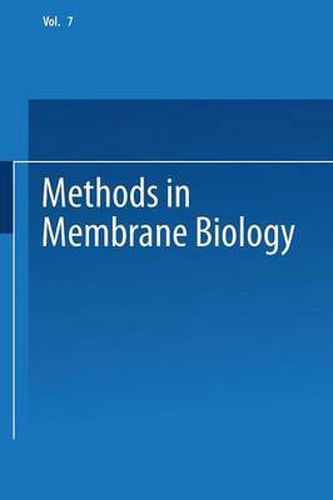Readings Newsletter
Become a Readings Member to make your shopping experience even easier.
Sign in or sign up for free!
You’re not far away from qualifying for FREE standard shipping within Australia
You’ve qualified for FREE standard shipping within Australia
The cart is loading…






This title is printed to order. This book may have been self-published. If so, we cannot guarantee the quality of the content. In the main most books will have gone through the editing process however some may not. We therefore suggest that you be aware of this before ordering this book. If in doubt check either the author or publisher’s details as we are unable to accept any returns unless they are faulty. Please contact us if you have any questions.
The contributions of electron microscopy to membrane biology have been indispensable and, at the same time, disappointing. Membranes were known to exist before the advent of electron microscopy and general principles of their composition and molecular organization had been deduced from permeability and electrical conductivity measurements, polarized light microscopy, and X-ray diffraction. On the other hand, the complexities of the many intracellular membranes and membranous organelles were really not suspected until they were observed by the electron microscopist. One then had further hopes that the high resolution of the electron microscope (theoretically it can resolve atomic distances) would allow the visualization of the molecular architecture of membranes and lead directly to an under standing of structure and function at the molecular level. This expectation has been largely unrealized. Because of the great difficulties encountered in the preparation of biological material, because of the uncertainty of the chemistry of staining, and because of numerous electron optical artifacts, it has been a major challenge just to rationalize the observed images in terms of the known facts, let alone to utilize the images to expand our knowledge of the molecular structure of biological membranes. The many differences among membranes with respect to function and composition are lost in the universal trilamellar image. Perhaps the one major exception to this, and the major structural contribution of electron microscopy at the molecular level, has come from freeze-etch electron microscopy.
$9.00 standard shipping within Australia
FREE standard shipping within Australia for orders over $100.00
Express & International shipping calculated at checkout
This title is printed to order. This book may have been self-published. If so, we cannot guarantee the quality of the content. In the main most books will have gone through the editing process however some may not. We therefore suggest that you be aware of this before ordering this book. If in doubt check either the author or publisher’s details as we are unable to accept any returns unless they are faulty. Please contact us if you have any questions.
The contributions of electron microscopy to membrane biology have been indispensable and, at the same time, disappointing. Membranes were known to exist before the advent of electron microscopy and general principles of their composition and molecular organization had been deduced from permeability and electrical conductivity measurements, polarized light microscopy, and X-ray diffraction. On the other hand, the complexities of the many intracellular membranes and membranous organelles were really not suspected until they were observed by the electron microscopist. One then had further hopes that the high resolution of the electron microscope (theoretically it can resolve atomic distances) would allow the visualization of the molecular architecture of membranes and lead directly to an under standing of structure and function at the molecular level. This expectation has been largely unrealized. Because of the great difficulties encountered in the preparation of biological material, because of the uncertainty of the chemistry of staining, and because of numerous electron optical artifacts, it has been a major challenge just to rationalize the observed images in terms of the known facts, let alone to utilize the images to expand our knowledge of the molecular structure of biological membranes. The many differences among membranes with respect to function and composition are lost in the universal trilamellar image. Perhaps the one major exception to this, and the major structural contribution of electron microscopy at the molecular level, has come from freeze-etch electron microscopy.